On a surprisingly mild January day, the beach was empty of people and expansive. The beginning of the Marram grass covered sand dunes can be seen on the right hand side of the picture.
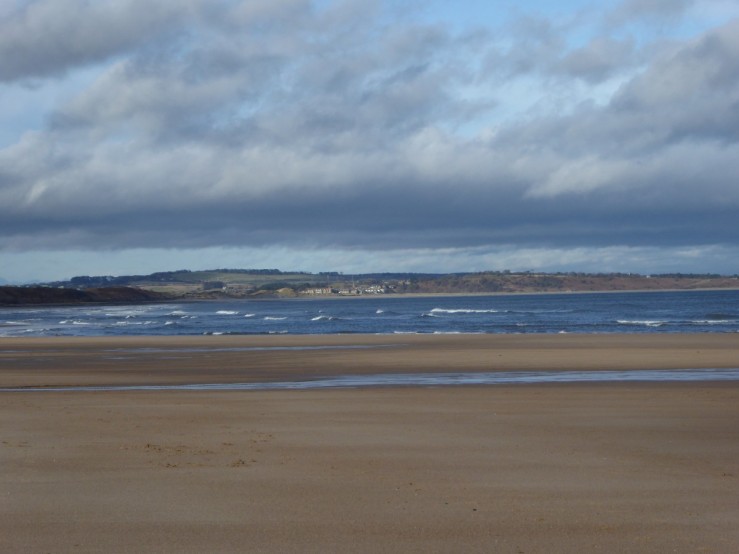
Near the car park, Snowdrops (Galanthus nivalis) were nearly in full flower. Not native plants, Snowdrops have been naturalizing for centuries.
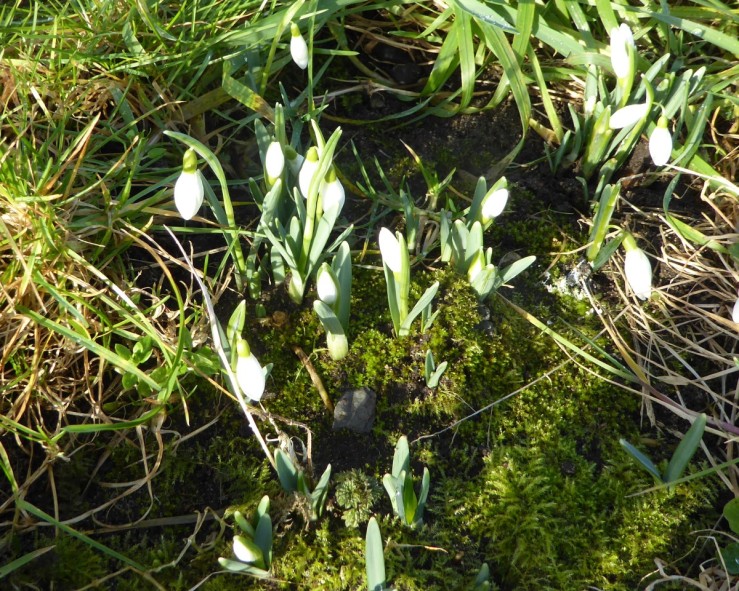
White Deadnettle (Lamium album) has been flowering throughout the winter. A herbaceous perennial plant belonging to the mint family (Lamiaceae), it can be eaten in salads. The one in the picture looks very like Mint.
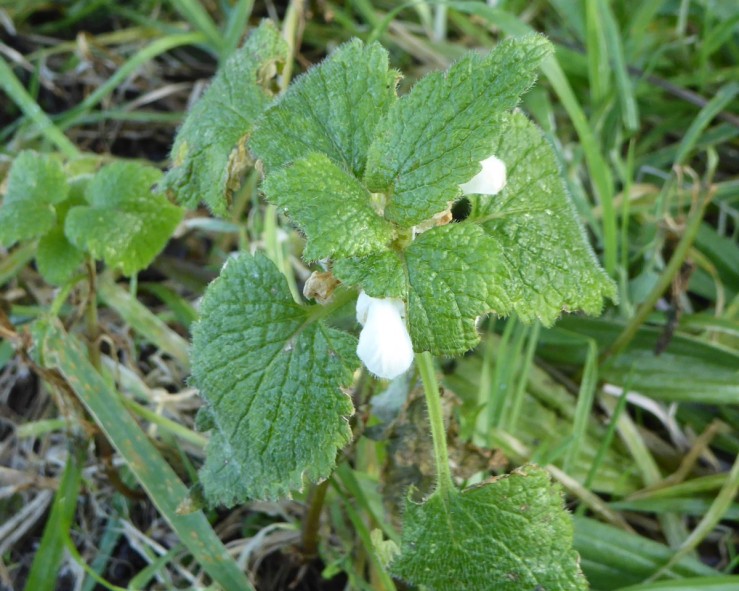
A Scots Pine (Pinus sylvestris) is showing female flowers in the top left of this photo. Scots pine is monoecious, having both male and female flowers grow on the same tree. Female flowers are the small, red-purple and globular, growingat the tips of the shoots. It is one of the three native UK conifers. This one has probably been planted.
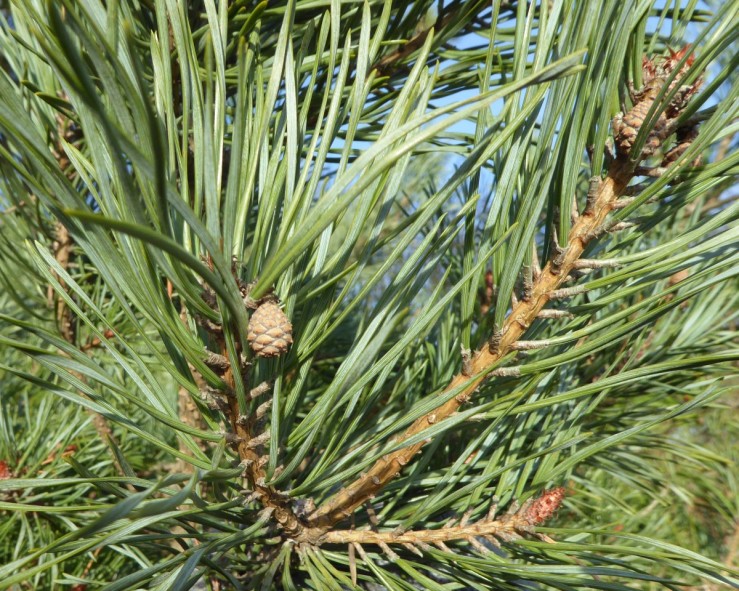
We noticed many kinds of sea and wading bird. Possibly Red -throated diver, Common or Velvet Scoter and Auks of some kind. More definitely, Cormorant, Black backed Gull, a golden host of Curlew feeding in the estuary, and a lone Redshank. A flight of Lapwing took to the air in a wonderful display.
In the Dune slacks and saltmarsh edges, shown below, I stopped to look at some of the larger plants.
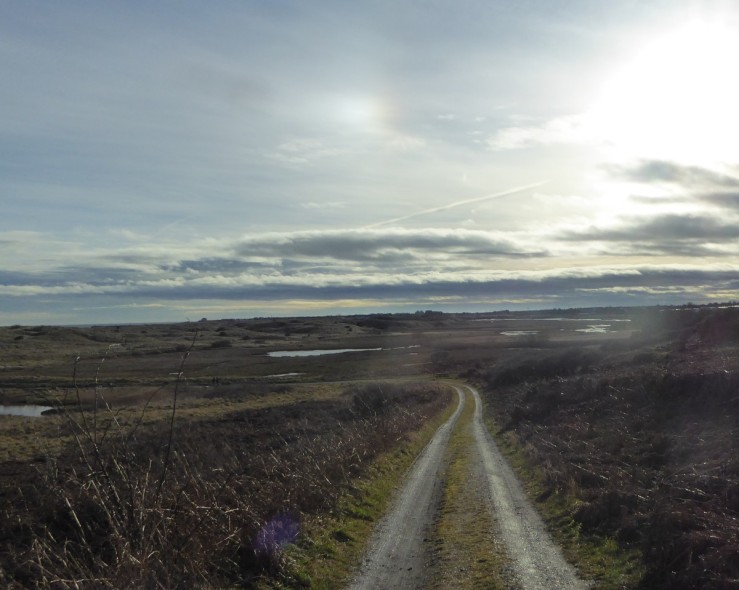
This Sea Arrow-grass (Triglochin maritima) still displaying its long handsome dried seed heads. Apparently it tastes like coriander but the leavescontains a toxic cyanobacteria, so best eaten in small quantities.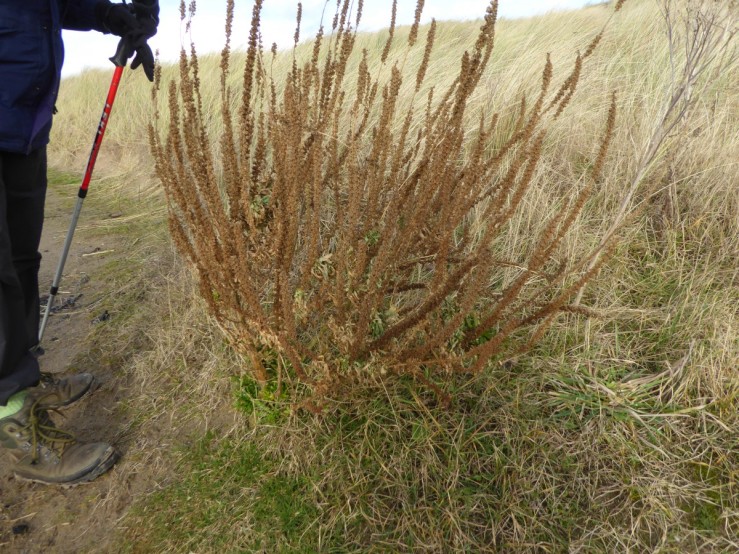
This is Weld (Reseda luteola) or Dyers Rocket. It produces a yellow/ green dye and the flavonoid luteolin.
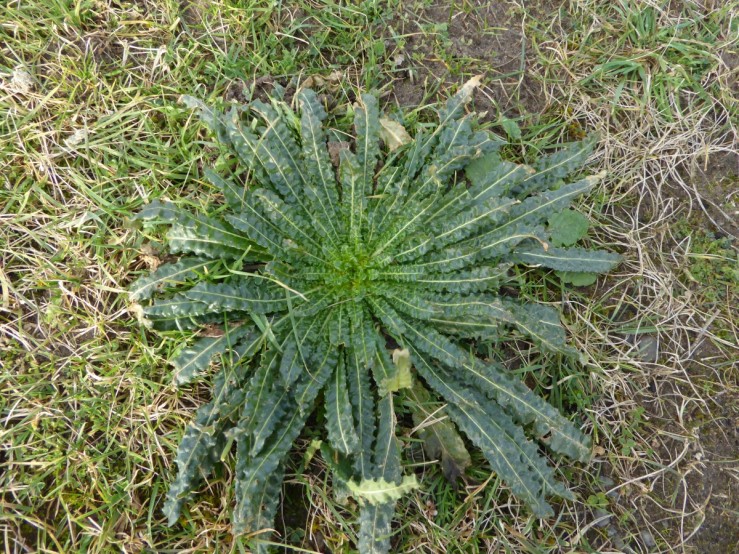
Very bristly, this must be Bristly Ox-tongue (Helminthotheca echioides), which tolerates a salty environment. As the name suggests it is used as a de-wormer. Dogs sometimes like to eat it, even though a bristle emerges from each papule on the leaf.
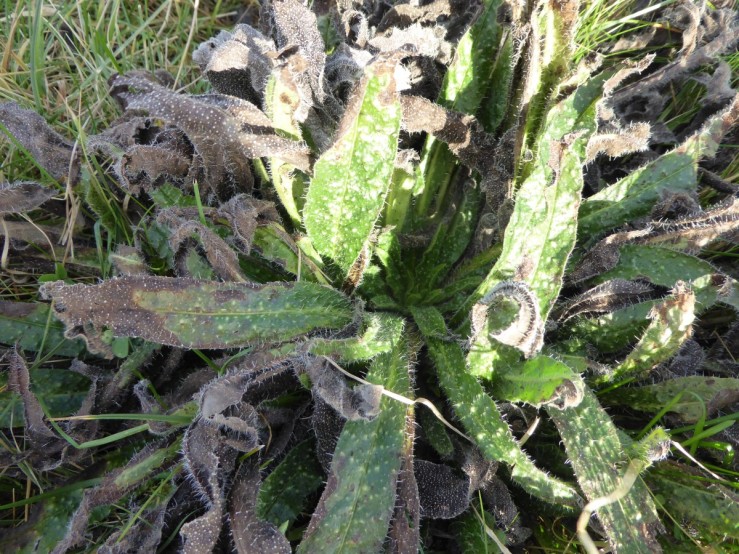
This drift of Tansy (Tanacetum vulgare) still had it attractively scented dried heads on show. Although a member of the Dandelion family, it only has central disk florets and no rays, hence the name Golden Buttons. It is now considered poisonous and is a source of insecticidal Pyrethins.
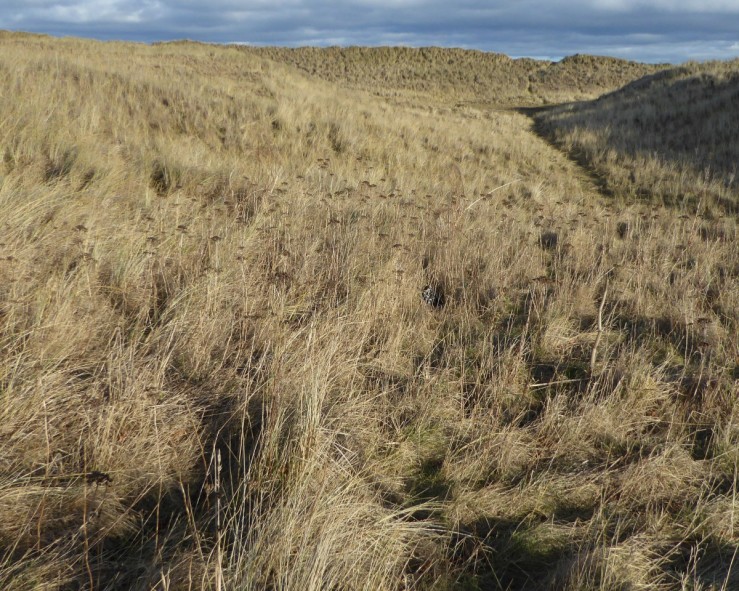
Many Lichen ‘species’ grow by the sea or even in the sea. There were rock covering Xanthoria parietina in the yellow zone but also this green variety.
The lichen lobes are much thinner in shady locations than in those exposed to full sunshine. They look greener as the algae are not masked by the sunburst colour of the pigment parietin.
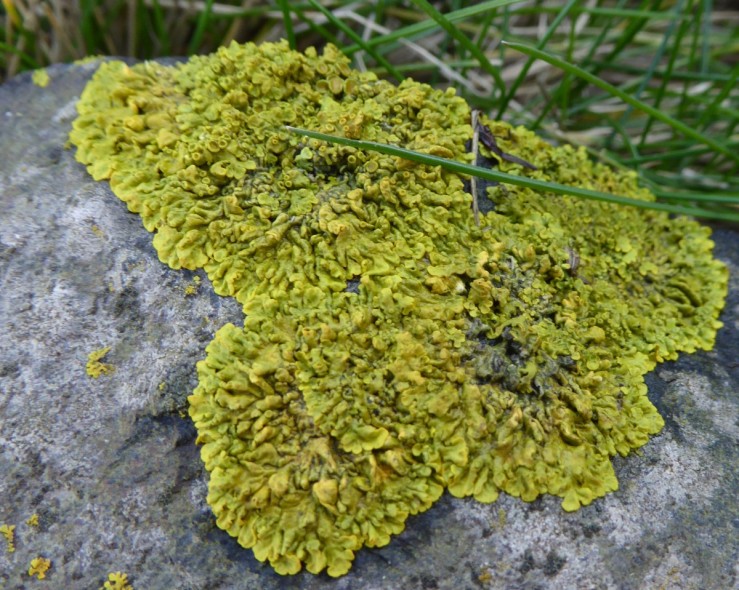
This one looks like a Pertusaria or Aspicilia but when examined by a hand lens was more like Lecanora gangaloides. Photograph can be confusing. The yellow Xanthoria parietina can be seen around it with the greyish Hypnogymnia physodes.
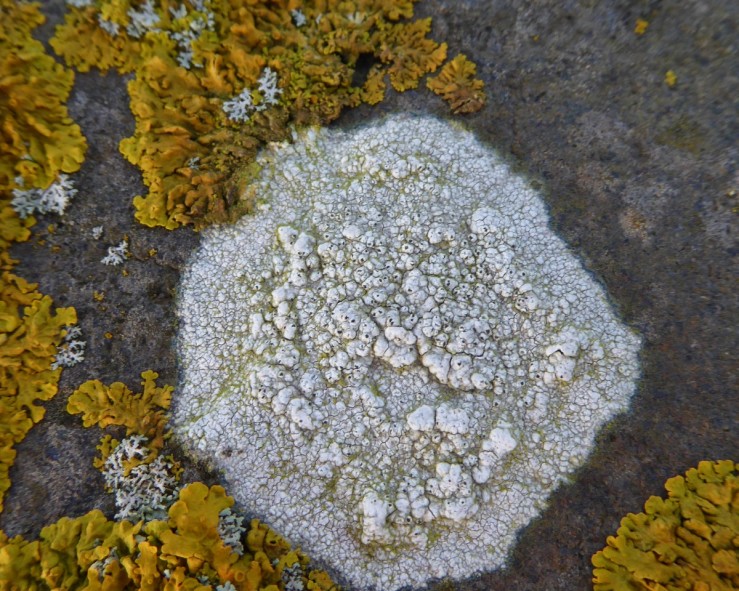
Another confusing picture of Tephromela atra below, a common seaside rock lichen.
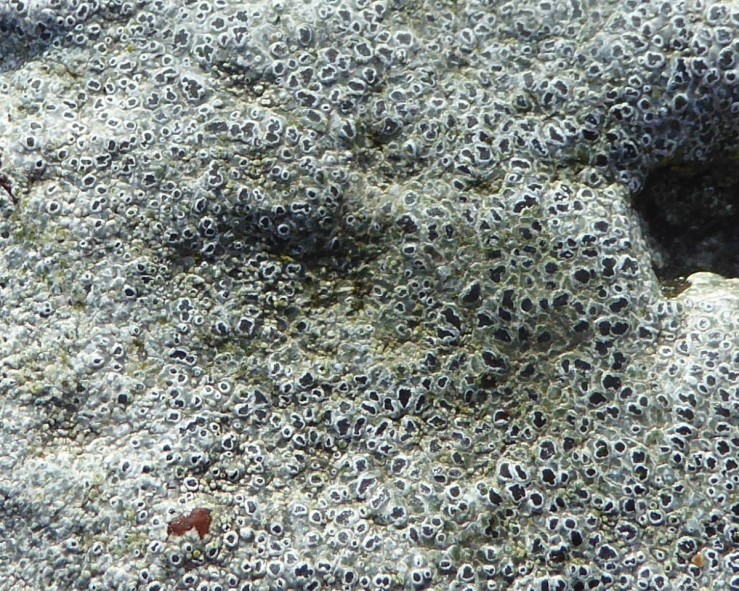
This one with apothecia like garnets set in coral, is Lecanora campestris.
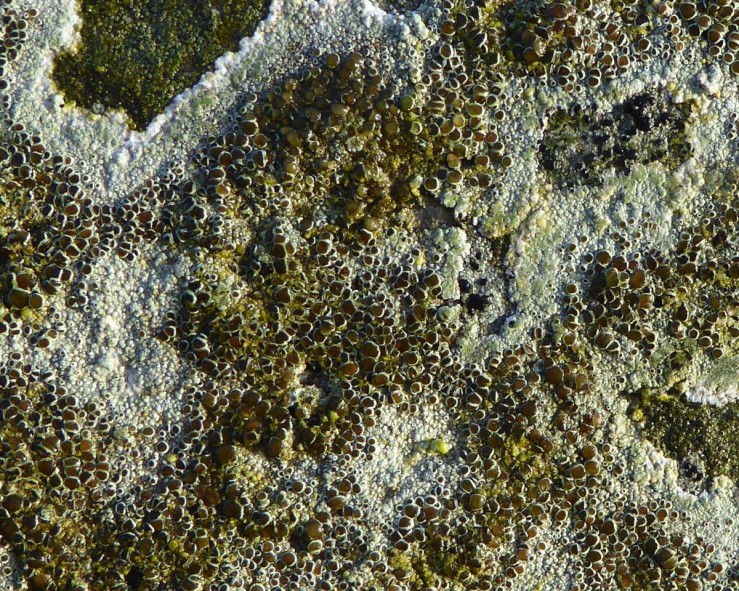
References: